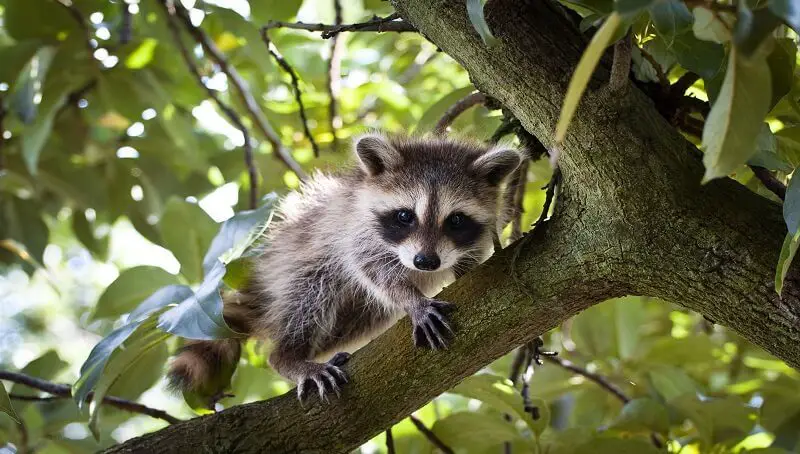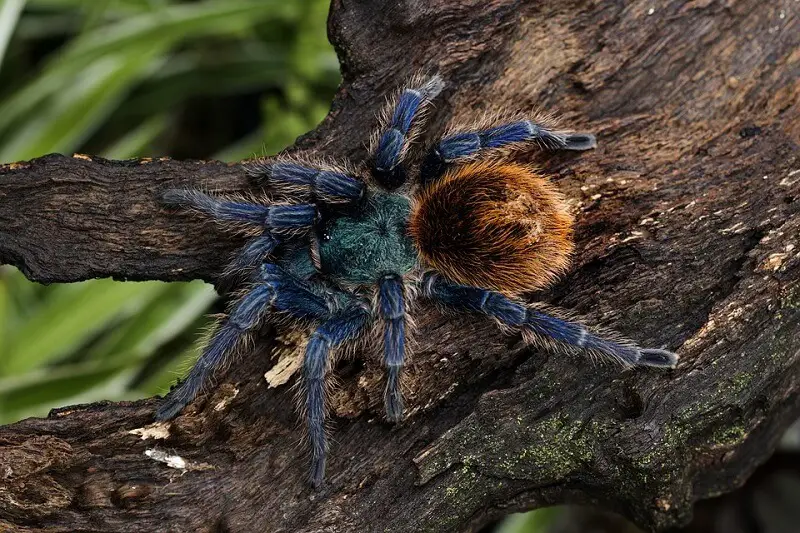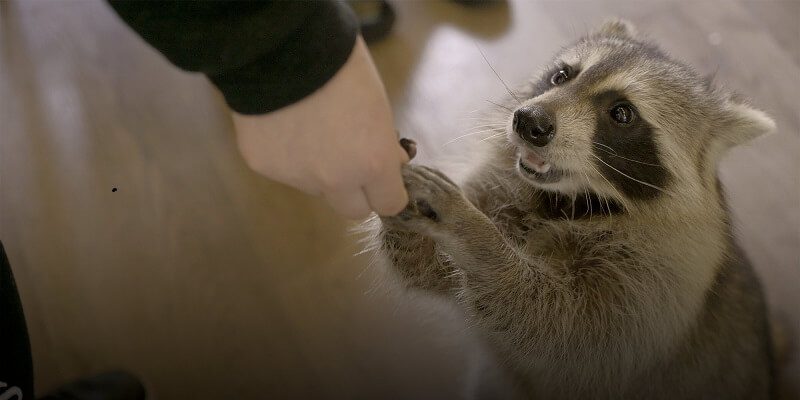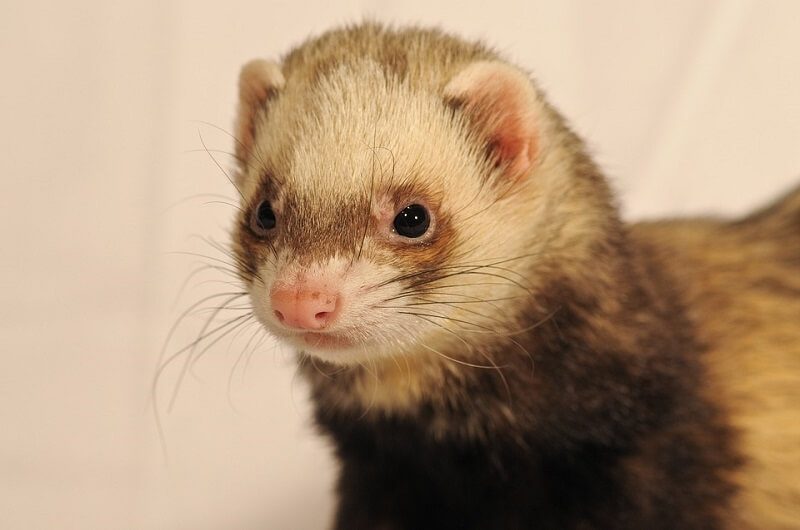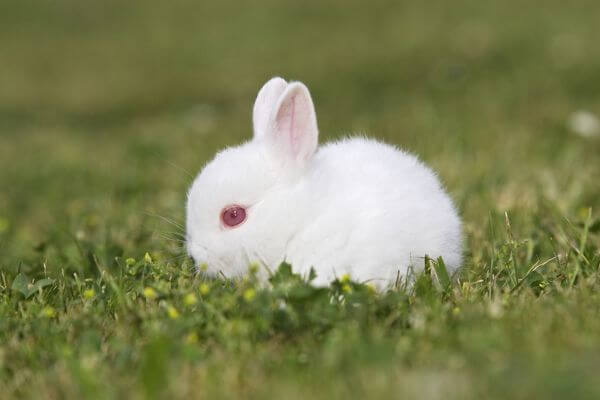Having a raccoon as a pet seems strange, but not so inconceivable for today’s world. More and more often, these funny animals are integrated into people’s families and occupy a real place within them.
The raccoon (Procyon lotor) is an omnivorous mammal, part of the order Carnivora, from the family Procyonidae. The name of the raccoon comes from the Indian word “arakun” which translates as “the one who is scratching”, and the Latin name “lotor” means “washer”, which refers to its habit of washing its food (it actually seems that by watering its food and paws it stimulates its tactile sense).
A raccoon’s lifespan in the natural environment is small, between 2 and 3 years, but in captivity, the raccoons can live up to 20 years.
What does a baby raccoon look like?
A baby raccoon is called a cub or kit. Most kits are born during spring between March and April. It happens that the first litter might not survive so, the mother gives birth to a second one at the latest in June. A mother’s care can’t compare to anything!
Kits are breastfed until they are about 12 weeks old. When they are born, they can’t hear nor see, which makes them completely helpless. Baby raccoons will be able to stand at around 5 weeks old.
If you are worried that you might have baby raccoons in your attic or basement, try to know for sure because even though they are born deaf and blind they know how to make themselves heard. If they are afraid, hungry, in distress, or happy, they can cry, mew, growl, or hiss.
Baby raccoons aren’t born with their bandit markings. The markings won’t be seen until they are several weeks old, because they are born almost bald. The baby fur they have is lighter than one of the adults. The baby raccoon’s mask will be seen at around 10 weeks old and will get darkened as the kit grows.
When a mother raccoon goes out with her babies you can see them all walk behind her in a straight line, just like a mother duck and geese.
Some Facts About Baby Raccoons
From a small age, you should try to instill good eating habits and behaviors in your new pet. Never reprove it aggressively. You will always use the same word: For example, “NO,” so, the kit understands that what it’s doing is not right. They are smart and curious animals that will certainly try to bite, scratch, and climb any piece of furniture, surface, and object. Therefore you must be prepared.
In the first few days, watch your animal to control its behavior and avoid the risks it will certainly try to take.
I recommend that anyone who wants to have a raccoon as a pet consults a professional or expert to advise them on its education because they will certainly need to shape their bad behavior.
Remember that if you did not buy the baby raccoon, it may show signs of aggression with someone who tries to repress its behavior. Finally, you need to know that they sometimes emanate a strong smell.
Dangers of having raccoons around your environment
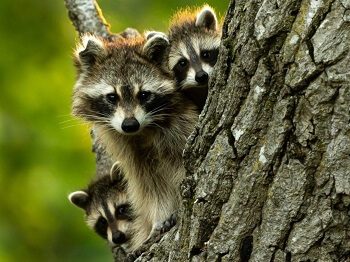 If you are going to keep a raccoon at home, you must pay special attention to a parasite called “Baylisascaris infection” specific to these species. The pet must also be vaccinated against rabies.
If you are going to keep a raccoon at home, you must pay special attention to a parasite called “Baylisascaris infection” specific to these species. The pet must also be vaccinated against rabies.
Rabies is a viral disease affecting the central nervous system and usually spreads through a bite of an infected animal. The disease leads to inflammation of the brain and vertebral column, being fatal if not treated.
The treatment consists of the anti-rabies vaccine and it is only effective in the first phase of the disease before symptoms occur.
Give it the proper medicine each month, for fleas, ticks, and lice, as you would do with a dog. I suggest you ask the veterinarian what medicine is suitable for the raccoon.
I do not recommend people who have children to have a raccoon as a pet. The raccoon may be very sweet with the children but, in some situations, it may be quite unpredictable.
Raccoons cannot be tamed, but merely educated, and therefore I suggest you use the services of an expert in the field.
When the raccoon is in a mood to sleep, don’t bother it. A wrong move and you’ll have all sorts of signs, as a cause to its reaction.
You might also like my articles about bats as pets, koalas and how dangerous they are, and tarantulas and their diet.
Buy it as many toys as you can, or it will chew everything you have in your house like furniture, shoes, sofas, carpets, etc., but if it has its own toys, you are saved.
Related And Frequently Asked Questions
Can I have a baby raccoon as a pet?
On the various online sales pages, you will find many ads about raccoon breeders, but you will not find them, for example, in the pet shops around you. Why? The raccoon is not a pet and does not show the same teachable behaviors as cats or dogs. The natural place where the raccoon must be is in the forest, in its natural habitat.
It is a playful and docile mammal during youth, but as an adult, it can be aggressive with people if it is not treated properly. Remember that far from the friendly and casual typical baby raccoon, it also has teeth and claws and will not hesitate to use them if it feels threatened.
You can always buy a raccoon as a pet if you buy it as a kit because it’s ideal to start educating and recognizing you as its family. You should never adopt an adult raccoon.
If you are determined to adopt a raccoon because it is an exotic animal, it is better to head to farms specialized in this type of atypical pet or to go to animal shelters. It will be essential to invest time to inform yourself about the origin and care they need.
If you go to a specialized breeder, you must ask the seller to have the CITES, International Convention on Trade in Endangered Species, certificate. This certificate will ensure you that your new pet does not have rabies and other diseases dangerous to you and your family.
The best option if you want to have a raccoon as a pet is certainly to go to an animal shelter. On many occasions, people who were determined to adopt a raccoon have been overwhelmed by their character, their behavior, and so on. Every year, animals are abandoned around the world, so people join the option of solidarity and forget the trade in animals. You can also be one of them!
How to tell the age of a baby raccoon?
As I mentioned above, raccoons are born almost bald. You can tell its age approximately if you see it hairless and with no mask, as its specific bandit mask starts to darken around 10 weeks.
Besides this aspect, the most accurate way to tell a kit’s age is by weight. Here is a table with a baby raccoon’s weight specific to its age:
Age Weight (Gram)
One week old 100 gr or less
2 weeks old 250 gr
3 weeks old 350 gr
5 weeks old 550 gr
9 weeks old 950 gr
What does a baby raccoon eat?
Baby raccoons, who live with people since they are almost newborns, grow up to be affectionate and kind. But caring for a one-month-old kit is a difficult task. It is therefore recommended that the baby raccoons should be taken home at the age of 1,5 months or more when they start to eat solid food already.
Feeding raccoon cubs up to 1,5 months old
If you have a raccoon cub, prepare yourself for having to feed and soak it day and night, massage its belly and monitor its health closely. Babies are fed with a milk substitute from cats, but not from goats, cows, or horses.
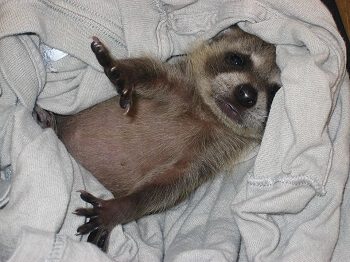 Every 3-4 hours the kit should be fed. To do this, you should use a nipple bottle, a pipette, or a disposable syringe (without a needle). In some cases, babies start to drink from a plate. After eating, the kit should sleep for 3 to 4 hours. If it wakes up earlier, it means it didn’t eat enough. If it sleeps longer, probably, you feed it too much. Get an electronic scale and weigh your pet every day. There should be at least a small increase in weight.
Every 3-4 hours the kit should be fed. To do this, you should use a nipple bottle, a pipette, or a disposable syringe (without a needle). In some cases, babies start to drink from a plate. After eating, the kit should sleep for 3 to 4 hours. If it wakes up earlier, it means it didn’t eat enough. If it sleeps longer, probably, you feed it too much. Get an electronic scale and weigh your pet every day. There should be at least a small increase in weight.
After feeding and in the interval between them, it is imperative to massage their belly. The baby raccoon, at this age, cannot do its necessities alone. If there was no defecation after feeding or after the massage, it is necessary to repeat the massage every 40-50 minutes till the desired result.
Feeding a baby raccoon from 1,5 to 2,5-3 months
At 5-6 weeks you should place in the milk mixture: banana, cow cheese, quail eggs. Start with small portions. First, add 1-inch-thick banana rings to the milk mixture. At the next feeding, the banana portion should be increased.
At the same time, the defecation is monitored. If there is no diarrhea, increase the banana quantity. When it has diarrhea, place a banana in the milk mixture and add a spoon of rice broth or oak bark. If it has mucus, blood, or a fetid odor in it, make sure to seek help from your veterinarian.
Starting from 2,5-3 months, the kits eat themselves from a bowl.
What to do if you find a baby raccoon?
Raccoon babies are so cute, but if you see one, you shouldn’t take it home with you. It is very important not to touch or approach wild animals. Kits may seem abandoned but, usually, they are not, and their parents do not return if people are too close.
If you found a warm and healthy kit, there is a high chance that its mother is around and it can be reunited with its family. Don’t forget, nobody can do a better job than the mother raccoon, in this case.
The baby raccoon should be placed in the same spot or as close as possible to the place where it was found (in case that place seems unsafe). Remember that the mother raccoon uses the same route when it goes out in search of food. You can also put the kit in a box from where it can’t go out, but the mother raccoon can get in and out. You should cover most of the box if it rains.
The baby raccoon must be left there overnight and checked in the morning. If it is not in the box the mother must have found it, but if it’s still over there, you should take it to a veterinarian, who will know what is to do next.
As the statistics say, in their natural habitat, the average lifespan of the raccoon is about 3 years, but in a home, it can reach up to 20 years. However, these funny animals live much more comfortably next to a person.
Almost everyone thinks raccoons are the nicest creatures, so it’s no wonder that many begin to have striped raccoons at home. The owners’ reviews in this respect are not as positive as they would seem. Of course, these pretty animals arouse a lot of positive emotions. However, you must understand that these animals are not yet as domesticated as dogs or cats. Therefore, you should not expect sincere affection from a raccoon.
Finally, I would like to point out that the raccoon should not be a pet, even if some of them are well cared for and friendly with the family. This will depend on each particular situation.
